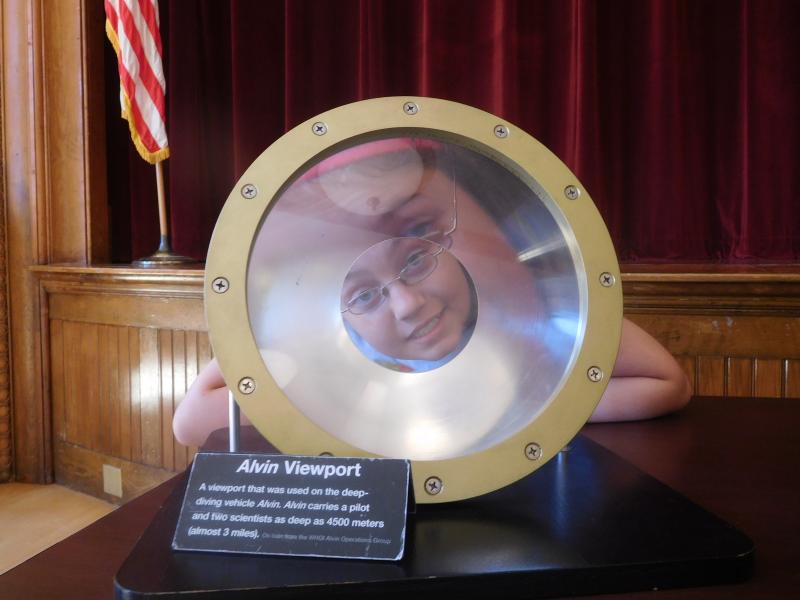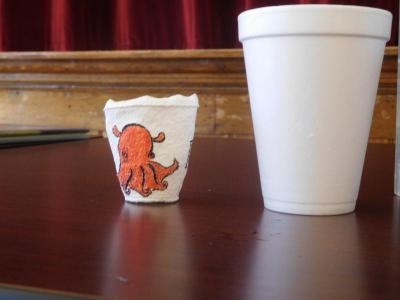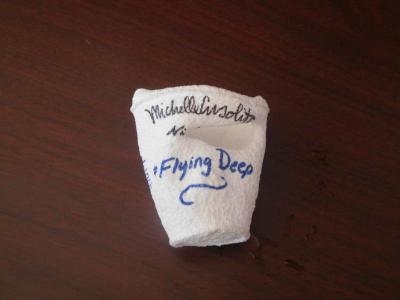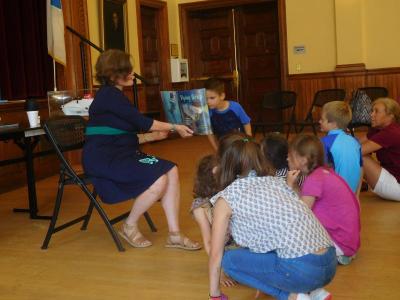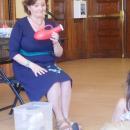Rochester author takes Marion children on a deep sea dive with book
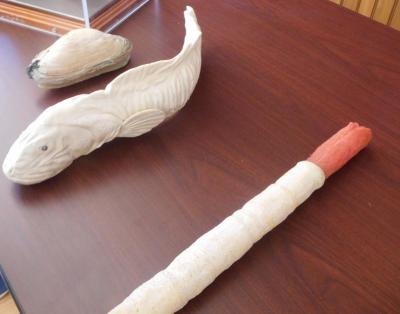
MARION — When Michelle Cusolito started her July 24 talk on her book “Flying Deep,” about the Alvin submersible, famous for exploring the Titanic wreck, one of the children said “Alvin! Like Alvin and the Chipmunks!”
Cusolito put her former teacher skills to use, and by the end of her talk, 24 children and their parents knew a lot more about the 23 foot craft, and what it’s like for aquanauts to go on a dive. The talk was hosted by the Elizabeth Taber Library.
She also brought a number of artifacts, loaned to her by the Woods Hole Oceanographic Institute, which runs the Alvin, for children to look at and touch. These included models of the Alvin and animals that live in the deep, and a porthole that used to be in the Alvin, but was removed when the submersible was remodeled because scientists were concerned with the wear and tear on it (Alvin is the longest continuously-operating submersible, and has been running since 1964).
She read her book, which doesn’t explore the Titanic dives, but does tell what it’s like to go on a three-person dive, peppering the reading with sound effects and extra facts.
“I’ll tell you about the stuff that couldn’t get into the photos,” Cusolito said. One of those things was an extra boat that stays behind to collect the swimmers that give Alvin an exterior quality check before it dives. The main boat that carries Alvin, called Atlantis, has to take off right after she releases Alvin to avoid a collision.
Though not comforting material for a children’s book, Cusolito told the audience that Alvin actually sank in 1968, when the steel cables holding it to its ship (at the time called Lulu) snapped. The crew escaped, but Alvin took on so much water from the open hatch that it sank, and stayed on the ocean floor for ten months.
Scientists play music on the hour and a half dive down to two miles below the surface. When Cusolito asked children what music they would listen to in Alvin, Griffin was quick to say that he would choose Frank Sinatra.
Cusolito also had a plethora of facts about the animals that live in deep sea vents. “They can’t live up here, there’s not enough pressure,” she said. So scientists, “try to take only what they need to study,” she added. Researchers capture animals using a “slurp gun” (or suction sampler, in boring terms).
After the presentation children had a chance to look at and touch most of the things Cusolito brought.



